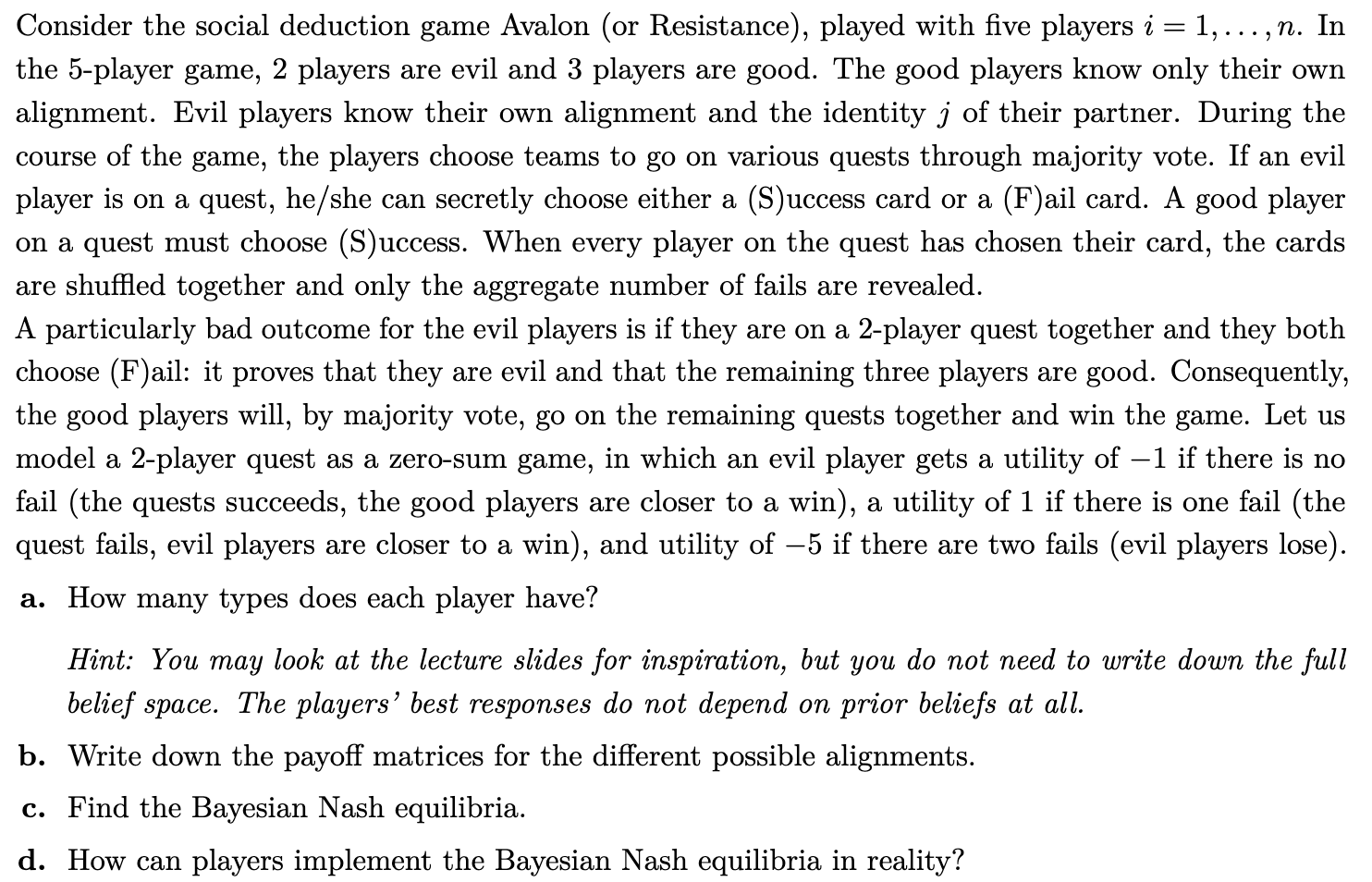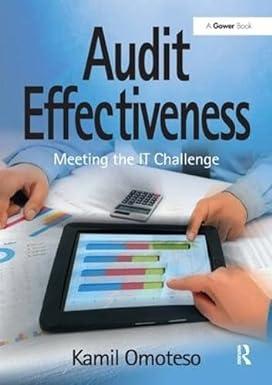
Consider the social deduction game Avalon (or Resistance), played with five players i=1,,n. In the 5 -player game, 2 players are evil and 3 players are good. The good players know only their own alignment. Evil players know their own alignment and the identity j of their partner. During the course of the game, the players choose teams to go on various quests through majority vote. If an evil player is on a quest, he/she can secretly choose either a (S)uccess card or a (F)ail card. A good player on a quest must choose (S)uccess. When every player on the quest has chosen their card, the cards are shuffled together and only the aggregate number of fails are revealed. A particularly bad outcome for the evil players is if they are on a 2-player quest together and they both choose (F)ail: it proves that they are evil and that the remaining three players are good. Consequently, the good players will, by majority vote, go on the remaining quests together and win the game. Let us model a 2-player quest as a zero-sum game, in which an evil player gets a utility of 1 if there is no fail (the quests succeeds, the good players are closer to a win), a utility of 1 if there is one fail (the quest fails, evil players are closer to a win), and utility of 5 if there are two fails (evil players lose). a. How many types does each player have? Hint: You may look at the lecture slides for inspiration, but you do not need to write down the full belief space. The players' best responses do not depend on prior beliefs at all. b. Write down the payoff matrices for the different possible alignments. c. Find the Bayesian Nash equilibria. d. How can plavers implement the Bavesian Nash equilibria in reality? Consider the social deduction game Avalon (or Resistance), played with five players i=1,,n. In the 5 -player game, 2 players are evil and 3 players are good. The good players know only their own alignment. Evil players know their own alignment and the identity j of their partner. During the course of the game, the players choose teams to go on various quests through majority vote. If an evil player is on a quest, he/she can secretly choose either a (S)uccess card or a (F)ail card. A good player on a quest must choose (S)uccess. When every player on the quest has chosen their card, the cards are shuffled together and only the aggregate number of fails are revealed. A particularly bad outcome for the evil players is if they are on a 2-player quest together and they both choose (F)ail: it proves that they are evil and that the remaining three players are good. Consequently, the good players will, by majority vote, go on the remaining quests together and win the game. Let us model a 2-player quest as a zero-sum game, in which an evil player gets a utility of 1 if there is no fail (the quests succeeds, the good players are closer to a win), a utility of 1 if there is one fail (the quest fails, evil players are closer to a win), and utility of 5 if there are two fails (evil players lose). a. How many types does each player have? Hint: You may look at the lecture slides for inspiration, but you do not need to write down the full belief space. The players' best responses do not depend on prior beliefs at all. b. Write down the payoff matrices for the different possible alignments. c. Find the Bayesian Nash equilibria. d. How can plavers implement the Bavesian Nash equilibria in reality







